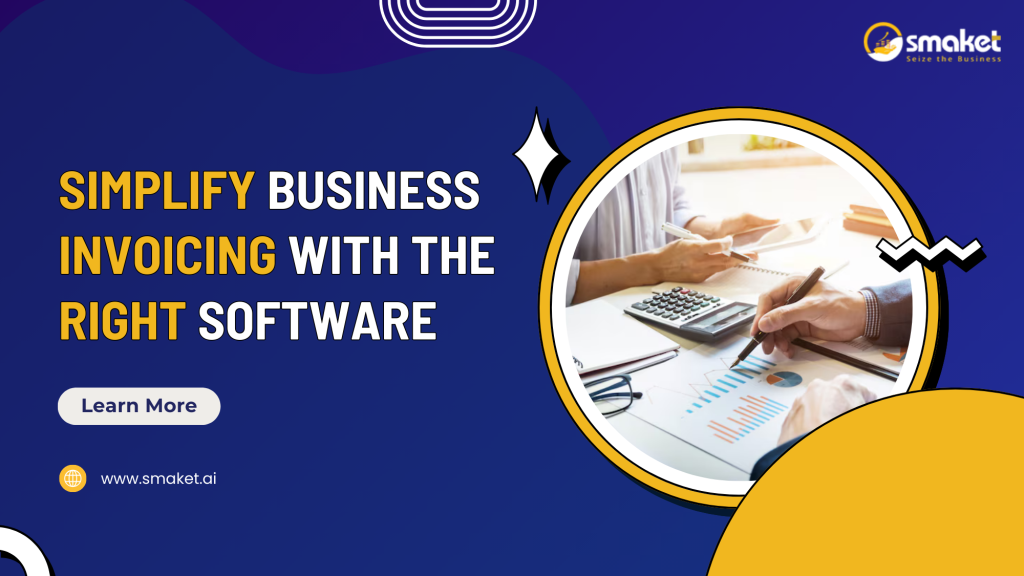For many small business owners, invoicing is a necessary but dreaded task. Whether you’re a freelancer sending one invoice a month or a company managing hundreds of monthly transactions, manual invoicing is time-consuming, error-prone, and inefficient.
Fortunately, there’s a better way.
Invoicing software automates billing, tracks payments, and helps you present a professional image — all while saving time and improving cash flow. In this guide, we’ll explore how to simplify business invoicing with the right software solution and what to look for when choosing the best fit for your company.
The Challenges of Traditional Invoicing
Manual invoicing may seem manageable at first, but it quickly becomes a bottleneck as your business grows. Here are the most common pain points:
- Late or missed payments due to forgotten follow-ups
- Human error from manual data entry
- Lack of organization, making it hard to track payments
- Time wasted formatting invoices or chasing down clients
- Limited scalability, especially with growing customer bases
If any of these sound familiar, it’s time to consider automation.
What is Invoicing Software?
Invoicing software is a digital solution that automates the process of creating, sending, tracking, and managing invoices. It replaces manual paperwork and spreadsheets with an efficient, centralized system.
Whether you’re a solopreneur, a service-based business, or an e-commerce company, invoicing software can help you stay organized, improve professionalism, and speed up your payment cycles.
Key Benefits of Using Invoicing Software
Let’s break down the most impactful benefits:
1. Save Time with Automation
You can generate invoices in seconds using templates, automate recurring billing, and schedule follow-up reminders. No more rewriting the same invoice or sending manual emails.
2. Improve Accuracy
Automated tax calculations, pre-filled customer data, and duplicate detection reduce costly errors.
3. Faster Payments
Send invoices immediately, including built-in payment links (e.g., Stripe, PayPal, bank transfer), so clients can pay instantly.
4. Boost Professionalism
Branded invoices give your business a polished, trustworthy look, crucial for first impressions.
5. Track and Report Payments
Know who paid, who didn’t, and when, with built-in dashboards and exportable reports for easy bookkeeping.
Use Case Examples
Freelancer:
Problem: Struggle with following up on unpaid invoices.
Solution: Uses recurring billing and auto-reminders in FreshBooks to automate the process.
Small Service Business:
Problem: Manually tracks dozens of monthly payments.
Solution: Uses QuickBooks to automate invoices and syncs with accounting for tax season.
E-commerce Business:
Problem: Needs branded invoices with every order.
Solution: Uses Zoho Invoice to auto-generate PDF invoices after each sale and email them to customers.
Tips for Choosing the Right Invoicing Solution
Here’s how to pick the best invoicing software for your business:
- Evaluate your needs – Do you need basic invoicing or full-scale accounting?
- Start with a trial – Most platforms offer a free trial; test usability.
- Check integrations – Make sure it works with the tools you already use.
- Review scalability – Choose a solution that grows with you.
- Compare costs – Look beyond the price — consider time savings and features.
Conclusion:
Your time is valuable, and your cash flow is essential. The right Business invoicing software simplifies one of the most tedious parts of running a company, improving accuracy, professionalism, and payment speed.
Whether you’re just starting or scaling fast, there’s a solution that fits your business.
Ready to streamline your invoicing? Try out a top-rated invoicing software today and experience the difference automation can make.

